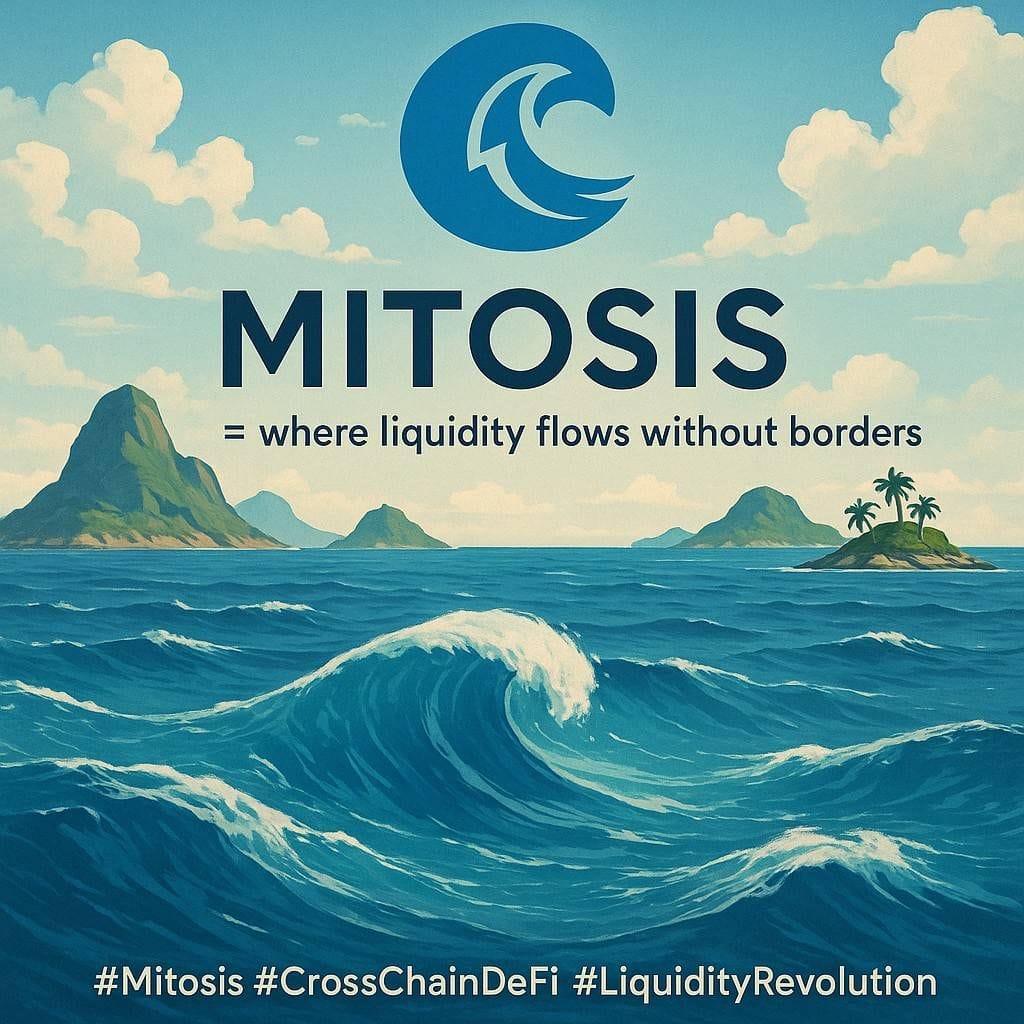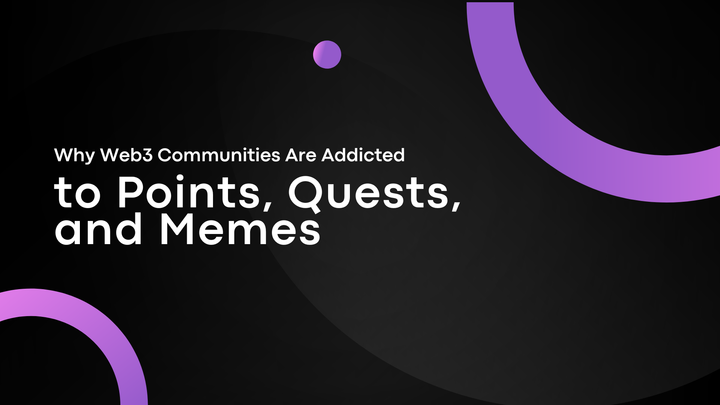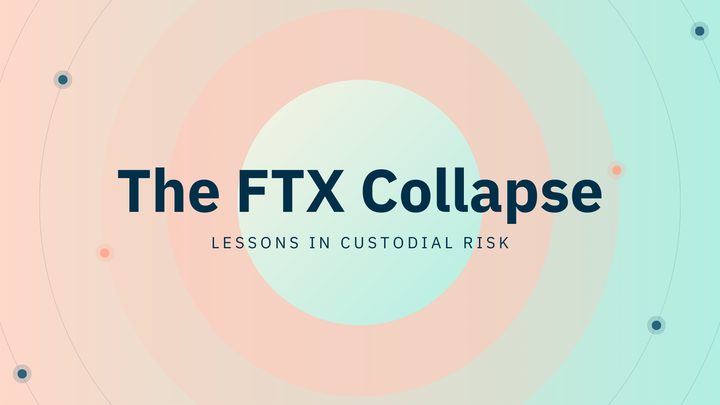Mitosis & Cross-Chain Liquidity: Can It Solve Fragmentation in DeFi?

Ever tried moving value across chains and felt like you were hopping between islands with no bridges? That's DeFi today: lots of liquidity, but it lives in silos. Mitosis wants to connect those islands, not with one shaky bridge, but with a whole transport system.
The multi-chain reality has created a paradox at the heart of DeFi. We have more liquidity than ever before, over $200 billion locked across dozens of chains, yet accessing that liquidity often feels harder than trading traditional assets. A user with USDC on Ethereum can't easily capture yield opportunities on Solana. Protocols launching on new chains start with zero liquidity, forcing painful bootstrap periods that could be avoided if existing capital could flow freely.
This fragmentation isn't just an inconvenience; it's an existential threat to DeFi's promise of open, efficient markets. Mitosis proposes to solve this through what it calls a "cross-chain brain", infrastructure that doesn't just bridge assets but creates programmable liquidity that can think and act across multiple chains simultaneously.
How the Problem Shows Up
Assets Get Stuck on One Chain: Missed Opportunities Elsewhere
The most immediate manifestation of DeFi fragmentation is capital inefficiency. A sophisticated DeFi user might hold positions across five different chains, but when opportunities emerge on a sixth chain, they face complex rebalancing decisions that often result in missed opportunities.
The transaction costs alone can be prohibitive. Unstaking ETH requires waiting periods and gas fees. Withdrawing liquidity triggers impermanent loss realization. Bridging assets introduces additional costs, time delays, and technical risks. By the time rebalancing completes, opportunities often disappear.
Professional DeFi participants maintain duplicate positions across multiple chains to avoid friction costs, but this requires significant capital overhead and complex portfolio management. Many potential participants are excluded entirely because they lack the technical sophistication or capital for multi-chain operation.
Bridges Are Clunky, Risky, and Often Slow
Cross-chain bridges combine poor user experience with systemic security risks. Most require users to understand technical details about different networks and navigate complex interfaces that assume deep protocol knowledge. The security track record is alarming, bridge exploits have resulted in over $2 billion in losses since 2021.
Speed remains problematic. Optimistic bridges require lengthy fraud proof periods extending withdrawal times to days or weeks. Fast bridges often sacrifice decentralization for speed. Cost structures add complexity as bridge fees vary dramatically based on network congestion and asset types, often exceeding profit margins from initially attractive opportunities.
Pricing the Same Asset Across Chains Is Messy
Theoretically identical assets trade at different prices across chains due to fragmented liquidity and arbitrage friction. USDC on Ethereum might trade at different premiums than USDC on Polygon. Yield-bearing assets face even more complex pricing challenges as liquid staking derivatives offer different yields across chains due to varying technical implementations.
This pricing messiness creates systematic advantages for quantitative trading firms while disadvantaging retail users who lack sophisticated pricing infrastructure. The result contributes to DeFi's gradual professionalization at the expense of individual participation.
How Mitosis Approaches It
Hub Assets + mi/maAssets: Standard Tokens That Represent Capital and Yield
Mitosis addresses fragmentation through standardized asset representations that maintain consistency across chains. Hub assets serve as canonical value representations, while miAssets/maAssets function as chain-specific implementations maintaining fungibility with hub representations.
This standardization solves pricing confusion plaguing current cross-chain assets. Rather than tracking dozens of wrapped versions of the same asset, users interact with standardized tokens maintaining consistent pricing relationships regardless of access chain. mi/maAssets incorporate yield generation directly into token mechanics, eliminating complexity of tracking separate yield positions across chains.
The hub-and-spoke model enables efficient liquidity sharing without requiring massive duplicated reserves on every chain. Mitosis can optimize capital allocation across the entire system while maintaining local transaction responsiveness.
EOL & Matrix Frameworks: Choose Governance-Driven Allocation or Curated Campaigns
Mitosis recognizes different user preferences through its dual framework approach. EOL provides governance-driven allocation for users wanting community oversight, while Matrix offers curated campaigns for those seeking specific yield strategies.
EOL appeals to users preferring decentralized capital allocation decisions but lacking time for active management. Community governance determines optimal strategies, risk parameters, and new opportunities. Users benefit from collective intelligence while maintaining individual control through liquid receipt tokens.
Matrix serves users preferring curator-driven opportunities with clear risk profiles. Rather than broad governance participation, Matrix users select specific campaigns aligning with their objectives. Both frameworks maintain on-chain receipts preserving capital fungibility and composability.
Programmable Liquidity: Positions Aren't "Stuck"; They're Composable
Mitosis treats liquidity positions as programmable objects rather than static holdings. Users deploy capital into programmable positions that can automatically rebalance, capture opportunities, and manage risk across networks without manual intervention.
Programmable positions include conditional logic responding to market conditions across chains. Users might deploy capital with automatic rebalancing instructions while maintaining specific risk parameters. This automation eliminates manual coordination challenges preventing users from capitalizing on cross-chain opportunities.
Composability extends to integration with other DeFi protocols. Mitosis positions serve as collateral, portfolio components, or structured product building blocks. Smart contract interfaces enable sophisticated automated strategies responding to cross-chain opportunities without manual intervention.
Why This Matters
Capital Efficiency Goes Up Because Assets Don't Go Idle
The primary benefit is dramatic capital efficiency improvements. Instead of maintaining separate positions on multiple chains, users deploy capital once and access opportunities across the entire multi-chain ecosystem. This reduces total capital requirements while increasing potential returns.
Idle capital represents DeFi's largest opportunity cost. Users often maintain cash reserves on multiple chains, but these earn minimal yields while awaiting deployment. Mitosis enables dynamic allocation capturing opportunities without pre-positioned reserves, increasing overall portfolio efficiency.
Efficiency improvements compound at ecosystem level. Protocols launching on new chains access existing liquidity rather than starting from zero, reducing bootstrap periods and accelerating development. Institutional participants benefit from reduced operational overhead, managing unified interfaces rather than separate systems for each chain.
Risk Is Easier to Manage Because You Can Rebalance Across Chains With Fewer Frictions
Effective risk management requires rapid position adjustment capabilities. Current cross-chain friction creates systematic barriers forcing users to accept higher risks or maintain less efficient allocations. Mitosis enables rapid rebalancing without complex bridge operations.
Improvements extend beyond individual portfolios to systemic risk reduction. Easy cross-chain rebalancing reduces concentrated positions that could create cascading failures during stress. Increased capital mobility creates more resilient markets absorbing shocks without amplification through forced liquidations.
Diversification benefits improve significantly when users access multi-chain opportunities without operational complexity. Users build truly diversified portfolios reducing correlation risk while maintaining simplicity. Hedging strategies become more accessible when cross-chain operations don't require specialist knowledge or significant costs.
Pricing Gets Clearer as Positions Standardize
Standardized asset representations create clearer pricing relationships, reducing confusion and improving market efficiency. Users compare opportunities directly without complex basis calculations, leading to better allocation decisions and more efficient markets.
Clarity extends to risk assessment where standardized positions enable better risk-adjusted return comparison across chains. Users evaluate opportunities based on fundamentals rather than technical implementation details. Market makers benefit from reduced arbitrage complexity and more predictable margins, attracting more capital and improving liquidity.
Technical Implementation and Competitive Challenges
Cross-Chain Communication and Security
Mitosis's approach requires sophisticated communication protocols enabling real-time coordination between blockchain networks. Unlike simple bridges handling transfers, the system requires continuous state synchronization and complex transaction coordination across multiple chains simultaneously.
The communication infrastructure must handle network partitions, consensus failures, and chain reorganizations while preserving user funds and system integrity. Message passing introduces latency affecting user experience, requiring balance between security and performance while maintaining compatibility across different consensus mechanisms.
Smart contract systems face unique security challenges compounding single-chain protocol risks. Each additional chain increases attack surfaces while creating new failure modes. The interconnected nature means vulnerabilities in any component can affect the entire system, requiring comprehensive security approaches and ongoing maintenance.
Competitive Landscape
The cross-chain space includes established solutions like LayerZero's omnichain protocol and Chainlink's CCIP, each with different trade-offs. Mitosis differentiates through programmable liquidity focus rather than simple bridging, but must demonstrate superior user benefits to overcome network effects favoring established solutions.
The dual framework approach enables market segmentation targeting different user types more effectively than one-size-fits-all solutions. Integration with liquid staking creates potential synergies pure bridge protocols cannot match. However, technical complexity creates execution risks that could undermine competitive advantages.
Network effects favor platforms with deep liquidity and broad integration, but achieving initial adoption requires overcoming chicken-and-egg problems. Mitosis must solve cold start challenges through partnerships, incentives, or compelling technical advantages while building critical mass for organic growth.
Future Implications and Practical Considerations
Impact on DeFi Architecture
Successful cross-chain liquidity could reshape DeFi from chain-specific protocols toward chain-agnostic applications deploying liquidity optimally across networks. This would reduce chain selection importance while increasing cross-chain execution capability importance.
Standardization effects could extend beyond liquidity to governance, identity, and reputation systems. Consistent cross-chain identity enables sophisticated applications currently facing fragmentation challenges, potentially accelerating innovation by removing chain-specific design constraints.
User and Protocol Strategy
Users must balance potential capital efficiency benefits against technical risks and learning requirements. Early adopters may capture advantages from improved efficiency and new opportunities but face higher technical risks during platform maturation.
Portfolio strategies should account for cross-chain capabilities when evaluating allocation approaches. Users with efficient infrastructure access can pursue dynamic strategies responding to multi-ecosystem opportunities rather than accepting suboptimal yields due to deployment friction.
Protocols considering integration must evaluate improved capital efficiency against increased technical complexity. Integration could provide broader liquidity access but requires ongoing maintenance and introduces new failure modes requiring management.
Conclusion: The Cross-Chain Future
Mitosis's comprehensive approach to cross-chain liquidity represents significant evolution beyond simple bridge infrastructure toward programmable cross-chain capital management. The combination of standardized assets, governance frameworks, and programmable positions addresses real pain points limiting DeFi's capital efficiency and user experience.
Success depends on execution across complex technical and market challenges. Cross-chain infrastructure faces inherent security and complexity trade-offs that cannot be eliminated, only managed effectively. The market will determine whether Mitosis's approach provides sufficient advantages to justify complexity compared to simpler alternatives.
The broader implications extend to DeFi's architectural evolution and innovation-risk balance. If cross-chain infrastructure can solve fragmentation without unacceptable risks, it could unlock significant value creation. Early adoption patterns, security records, and user experience quality will determine market acceptance and long-term viability.
What would you do differently if your liquidity could move like an API call? The answer will determine not just individual strategies but DeFi's entire trajectory toward true cross-chain financial infrastructure. Those who best adapt to programmable cross-chain liquidity will capture the most value from DeFi's next development phase.



Comments ()